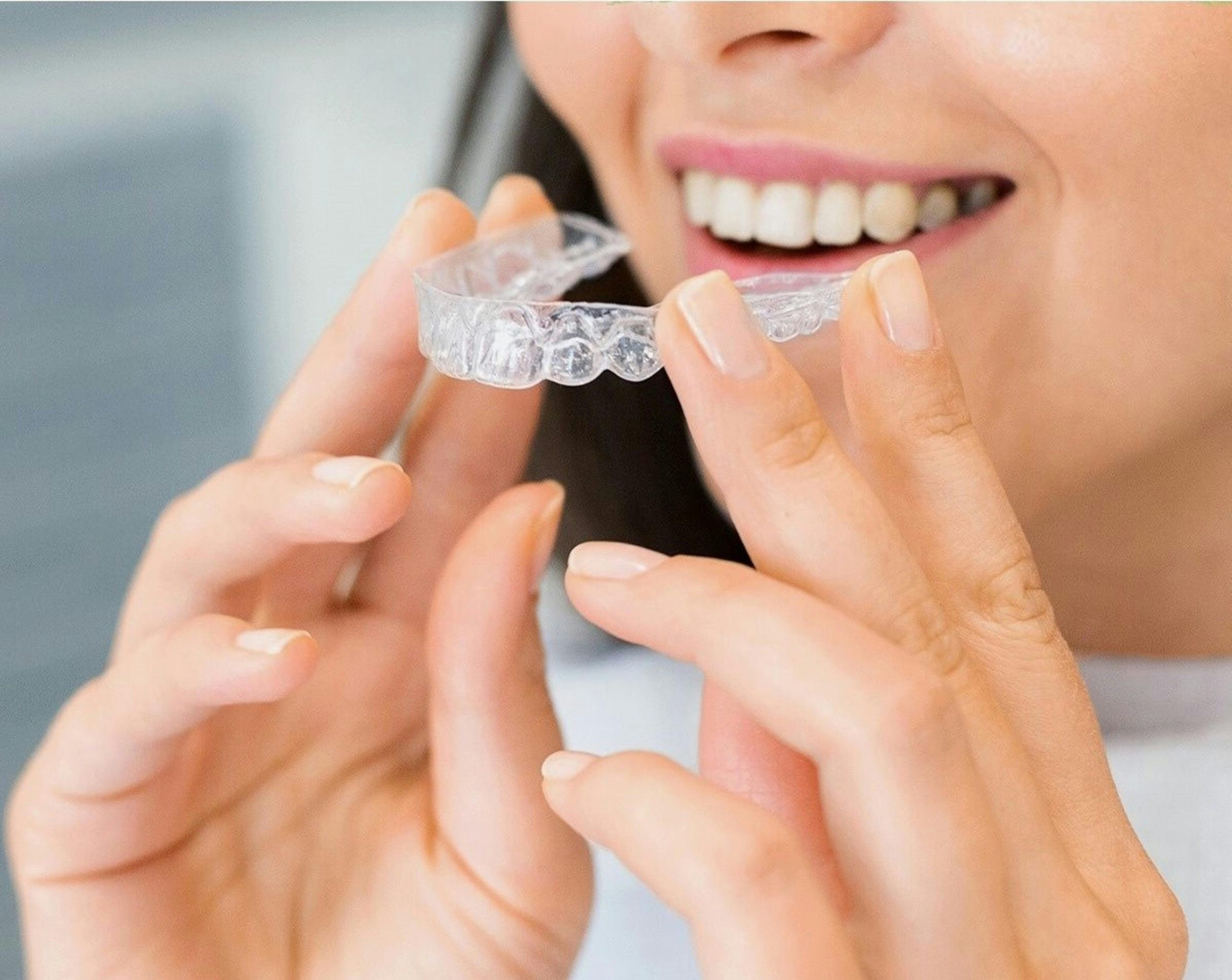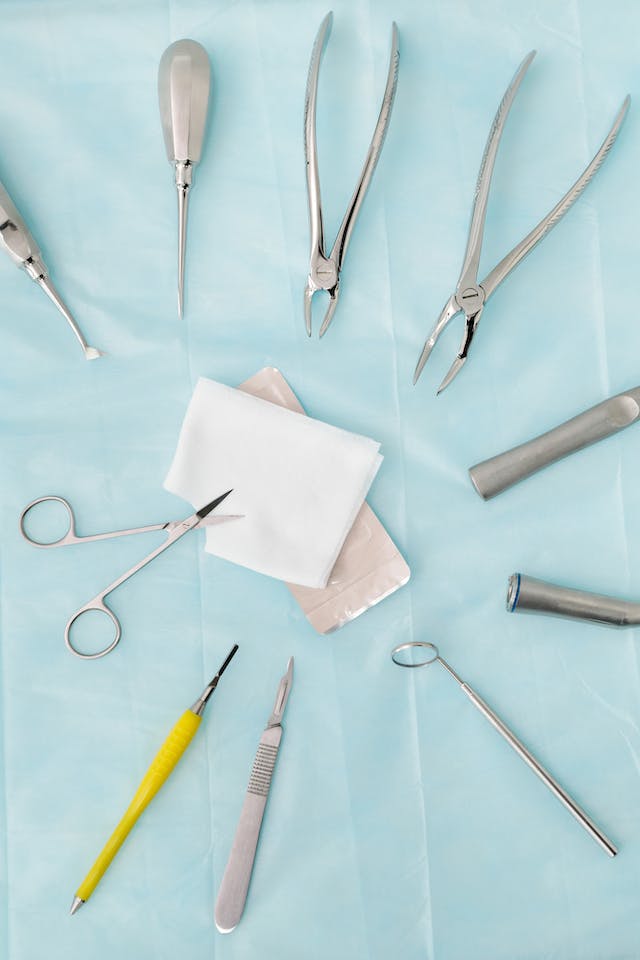Does Invisalign Hurt? What to Expect

Invisalign has emerged as a highly popular method for achieving a straighter smile without the need for traditional metal braces. Many patients in London and beyond are now turning to this innovative treatment for its aesthetic benefits and convenience. However, one question that frequently arises is: “Does Invisalign hurt?” In this comprehensive article, we explore the potential discomfort associated with Invisalign, what patients can realistically expect during treatment, and provide expert insights to help you make an informed decision.
An Overview of Invisalign
Invisalign is a modern orthodontic treatment that utilises a series of clear, custom-made aligners designed to gradually shift your teeth into a more desirable position. Unlike traditional braces, these aligners are virtually invisible, which makes them particularly appealing for adults and teenagers seeking a discreet option. Made from a smooth, BPA-free plastic, Invisalign aligners are designed for both comfort and effectiveness.
Patients typically change their aligners every one to two weeks, as recommended by their dental professional, ensuring that the teeth move incrementally and comfortably over time. The treatment plan is created after a thorough digital scan of your teeth, ensuring a personalised approach tailored to your unique dental needs.
Dr. Sahil Patel, one of London’s leading cosmetic dentists from Marylebone Smile Clinic, emphasises the importance of understanding the role of discomfort in achieving long-term dental benefits. He states:
“It is entirely normal for patients to experience some level of discomfort with Invisalign treatment. This is a sign that the aligners are effectively applying pressure to the teeth, which is necessary for movement. In my experience at Marylebone Smile Clinic, patients have found that any initial discomfort subsides within a few days, and the benefits of achieving a straighter, healthier smile far outweigh the temporary inconvenience. It is crucial to follow your treatment plan closely and communicate any concerns with your dental professional.”
This professional insight from Dr. Patel not only reassures patients but also highlights the importance of regular check-ups and open communication with your dental team throughout the treatment process.
Addressing the Pain and Discomfort Question
When starting Invisalign treatment, many patients experience a period of adjustment. The aligners exert gentle pressure on your teeth, which is necessary to encourage movement. This pressure, while effective, can lead to mild discomfort or soreness, particularly during the first few days of wearing a new set of aligners. The sensation is often compared to the feeling of mild muscle soreness after a workout. For most patients, this discomfort is temporary, gradually subsiding as the mouth adapts to the new aligners.
Understanding the Source of Discomfort
It is important to understand that the discomfort associated with Invisalign is not due to the material of the aligners themselves, but rather the pressure applied to your teeth. This pressure is a crucial part of the treatment process, stimulating bone remodelling and allowing your teeth to move. While some might experience mild pain, it is typically well-managed with over-the-counter pain relievers and is considered a normal aspect of orthodontic adjustments.
Variability of Pain Among Patients
Not all patients will experience the same level of discomfort. Factors such as the complexity of your dental issues, the frequency of aligner changes, and individual pain thresholds can all influence the level of discomfort felt. Some individuals may report minimal discomfort, while others might find the pressure more noticeable. However, it is rare for the treatment to cause severe pain that disrupts daily life.
What to Expect During Invisalign Treatment
Consultation and Digital Scanning
Your Invisalign journey begins with an initial consultation with a qualified dental professional. In London, many clinics offer state-of-the-art digital scanning technologies that capture a precise 3D image of your teeth. This scan serves as the basis for developing your customised treatment plan.
Custom Treatment Plan
Your dentist will use modern tools to make a plan for how your teeth will move from where they are now to where they should be in the end. This computer plan makes it easy to see how your smile will change over time. The length of your treatment depends on you, but most people finish in 12 to 18 months.
Fabrication of Aligners
Once your treatment plan is finalised, a series of custom aligners is created specifically for you. Each aligner is designed to make slight adjustments to the position of your teeth, gradually guiding them into place.
Wearing the Aligners
Patients are advised to wear their aligners for at least 20 to 22 hours a day. They should only be removed for eating, drinking (except water), and oral hygiene practices. This strict regimen ensures that the treatment remains effective and progresses as planned.
Periodic Check-Ups
Throughout the treatment, regular check-ups with your dental professional are essential. These appointments allow for the monitoring of progress and the adjustment of treatment plans if necessary. During these visits, your dentist will also address any concerns regarding discomfort or other issues that may arise.
Managing Discomfort: Practical Advice
While some discomfort is a normal part of the Invisalign process, there are several strategies to help manage it effectively:
Over-the-Counter Pain Relief: Many patients find that non-prescription pain relievers such as ibuprofen or acetaminophen help alleviate any soreness, particularly in the initial days after switching to a new aligner.
Cold Compresses: Applying a cold compress to the outside of your mouth can reduce swelling and numb the area, providing temporary relief.
Soft Foods: Eating a diet that includes soft foods can minimise discomfort, especially after a new set of aligners is introduced.
Aligner Removal: If the discomfort becomes significant, removing the aligners for a short period (while following your dentist’s advice) can help alleviate pain. However, it is important not to delay the overall treatment process.
Debunking Common Myths About Invisalign Discomfort
Myth 1: Invisalign Aligners Cause Severe Pain
One of the most prevalent myths is that Invisalign causes severe, unbearable pain. In reality, while some discomfort is expected, the pain is generally mild and short-lived. Most patients find that the soreness associated with each new aligner diminishes within a few days as the teeth adapt to the pressure.
Myth 2: Invisalign is Not Effective for Complex Dental Corrections
Some believe that Invisalign is only effective for minor adjustments. However, advancements in technology and treatment planning have expanded its capabilities. Many patients with more complicated dental issues have successfully used Invisalign to achieve significant improvements in their smile. The key lies in a thorough consultation and a well-crafted treatment plan that addresses the specific needs of the patient.
The Science Behind Invisalign
How Aligners Work
Invisalign aligners are engineered to apply consistent, gentle pressure to the teeth, encouraging gradual movement. Each aligner is designed with precise force points that target specific areas of the teeth. As the aligners are changed periodically, the teeth continue to shift until the treatment goals are met. The process of bone remodelling is integral to this movement. As pressure is applied, the bone surrounding the teeth remodels, allowing them to settle into their new position.
Materials and Design
The aligners are crafted from a highly durable, clear thermoplastic material that is both comfortable and resilient. The smooth edges and custom fit of the aligners help reduce irritation to the gums and soft tissues, which is an improvement over some traditional orthodontic appliances. The clarity of the material ensures that the aligners remain discreet, a quality that is particularly important for adults seeking orthodontic treatment without the visual impact of metal braces.
Technology and Precision
The use of digital scanning and 3D printing technologies has revolutionised the field of orthodontics. These advancements allow for a level of precision in treatment planning that was not possible in the past. Each set of aligners is custom-made, ensuring that the pressure applied is both controlled and effective. This technology also allows dental professionals to predict treatment outcomes with a high degree of accuracy, giving patients confidence in the process.
Patient Experiences and Testimonials
The Varied Experiences of Invisalign Users
Patient experiences with Invisalign can vary widely. Many Londoners have embraced the treatment for its aesthetic benefits and ease of use. For instance, some patients report experiencing only minimal discomfort that is easily managed with over-the-counter pain medications. Others note that while there is some initial soreness, the process is overall far more comfortable than having metal braces in place.
One common thread in patient testimonials is the gradual adaptation to the aligners. Initially, the sensation of having a foreign object in the mouth can be a bit unsettling. However, with time, most patients adjust quickly and appreciate the minimal interference with daily activities. The flexibility of being able to remove the aligners for special occasions, such as important meetings or social events, adds to the overall appeal of Invisalign.
Stories of Transformation
Many patients have shared inspiring stories of how Invisalign has not only improved their smiles but also boosted their confidence. One patient from central London described the transformation as life-changing: “I was initially worried about the discomfort, but it turned out to be a minor inconvenience compared to the dramatic improvement in my smile. The aligners were easy to manage, and the support from my dental team made all the difference.”
Another individual emphasised the benefit of having a discreet treatment option. “I work in a client-facing role, and I didn’t want the appearance of metal braces. Invisalign allowed me to undergo treatment without drawing attention to my smile, and any discomfort I experienced was completely manageable,” they explained.
Managing and Minimising Discomfort
Daily Routines and Adjustments
A key factor in managing discomfort is establishing a daily routine that includes proper care for the aligners and your oral health. Many patients find that brushing their teeth and cleaning their aligners regularly not only helps maintain hygiene but also reduces any irritation caused by plaque buildup or debris on the aligners. Rinsing the aligners with lukewarm water before reinsertion can help soothe the gums and reduce any sharp edges that might have developed over time.
Maintaining a Balanced Diet
During the periods when you are adjusting to a new set of aligners, consider modifying your diet to include softer foods that require less chewing. Foods such as soups, yoghurts, mashed potatoes, and smoothies are excellent choices during this phase. Avoiding overly hard, sticky, or chewy foods can help minimise pressure on your teeth and reduce discomfort.
Oral Hygiene Considerations
Good oral hygiene is essential during Invisalign treatment. Ensuring that your teeth and aligners are thoroughly cleaned on a daily basis can prevent the buildup of bacteria that might contribute to discomfort or gum irritation. Dentists in London often advise patients to brush their teeth after every meal and use a soft-bristled brush to avoid irritating the gums, which can be sensitive during treatment.
The Role of Regular Dental Check-Ups
Regular appointments with your dental professional not only track the progress of your treatment but also provide an opportunity to address any issues related to discomfort. If you experience significant pain or prolonged soreness, it is important to consult with your dentist. Adjustments can often be made to the treatment plan to ensure that your experience remains as comfortable as possible.
Addressing Specific Concerns for London Patients
Accessibility and Convenience
London is home to some of the country’s most advanced dental clinics, offering state-of-the-art technology and highly skilled professionals. Patients seeking Invisalign treatment can benefit from the convenience of clinics that are easily accessible by public transport. In a bustling city like London, the ability to schedule regular check-ups without long travel times can make a significant difference in managing the treatment process effectively.
Cost Considerations and Financing Options
The cost of Invisalign treatment in London varies based on the complexity of the dental issues and the duration of treatment. Many clinics offer flexible payment plans and financing options to help make the treatment more accessible. It is important to have a clear understanding of all costs involved and to discuss financing options during your initial consultation. Transparent pricing and detailed treatment plans help ensure that you are fully informed and comfortable with your decision to proceed.
The Impact of Lifestyle on Treatment Success
Londoners lead busy lives, and many worry that Invisalign might disrupt their daily routines. However, one of the advantages of Invisalign is its flexibility. Since the aligners are removable, patients can enjoy their favourite foods and maintain a regular social life with minimal interference from their treatment. Whether attending business meetings, dining out with friends, or exploring the city, Invisalign provides an effective and adaptable solution that fits seamlessly into modern lifestyles.
Long-Term Benefits of Invisalign
Improved Oral Health
Beyond the cosmetic benefits of a straighter smile, Invisalign can contribute to improved overall oral health. Misaligned teeth can create pockets where plaque accumulates, increasing the risk of gum disease and tooth decay. By realigning your teeth, Invisalign not only enhances the appearance of your smile but also improves your ability to clean your teeth effectively. Better oral hygiene, in turn, leads to healthier gums and a reduced likelihood of dental problems in the future.
Boosted Confidence and Self-Esteem
For many patients, the psychological benefits of Invisalign are just as important as the physical improvements. A straighter, more attractive smile can have a profound impact on self-confidence and overall well-being. This boost in confidence often translates to improvements in personal and professional life. Patients have reported feeling more positive and self-assured, which can lead to better social interactions and a greater willingness to smile and engage with others.
Long-Lasting Results
The results achieved with Invisalign are not only noticeable but also long-lasting. With proper retention strategies, such as wearing a retainer after treatment, patients can maintain the alignment of their teeth for years to come. The investment in Invisalign is therefore an investment in long-term oral health and self-confidence.
Innovations and Future Directions in Invisalign Technology
Advances in Digital Imaging
The rapid evolution of digital imaging and 3D printing technology has revolutionised how Invisalign treatments are planned and executed. These advances allow for increasingly precise control over tooth movement, minimising discomfort while maximising results. As technology continues to improve, patients can expect even more streamlined treatment processes and potentially shorter treatment durations.
Integration with Other Cosmetic Dental Procedures
Invisalign is increasingly being integrated with other cosmetic dental procedures to offer a comprehensive approach to smile enhancement. For instance, patients who may have minor imperfections alongside alignment issues can benefit from treatments such as tooth whitening or veneers. The combination of these procedures provides a holistic approach to dental aesthetics, ensuring that patients not only achieve functional improvements but also enjoy a radiant, attractive smile.
Ongoing Research and Development
The field of orthodontics is continuously evolving, and ongoing research into materials and treatment methodologies promises even more comfortable and efficient options in the future. Clinical trials and technological advancements are focused on reducing discomfort further and optimising treatment outcomes. Patients undergoing Invisalign today can be confident that they are benefiting from a treatment method that is at the forefront of dental innovation.
Final Thoughts: Weighing the Pros and Cons
Evaluating Your Options
Deciding whether Invisalign is the right choice for you involves weighing the potential discomfort against the long-term benefits. For many, the temporary mild discomfort is a small price to pay for the significant improvements in dental aesthetics and overall oral health. It is important to consider your personal dental needs, lifestyle, and treatment goals when making this decision.
Consulting a Professional
The best way to determine if Invisalign is suitable for your specific situation is to consult with a dental professional. London offers a wealth of experienced cosmetic dentists who can provide personalised advice and answer any questions you may have about the treatment process. A thorough consultation will help ensure that you have realistic expectations regarding discomfort, treatment duration, and outcomes.
Embracing a Positive Outlook
For those considering Invisalign, it is helpful to approach the treatment with a positive outlook. While some discomfort is a normal part of the process, it is typically manageable and short-lived. The end result—a beautifully aligned smile and improved oral health—often far outweighs the temporary challenges experienced during treatment.
Conclusion
Invisalign represents a modern, effective, and discreet alternative to traditional braces, offering significant benefits for both dental aesthetics and overall oral health. While the question “Does Invisalign hurt?” is a common concern among potential patients, it is clear that any discomfort experienced is generally mild, temporary, and manageable. The pressure applied by the aligners is a necessary component of the tooth movement process and typically subsides as the mouth adjusts.
Ultimately, Invisalign is more than just a cosmetic procedure; it is an investment in your long-term oral health and self-confidence. If you’re considering Invisalign, take the time to consult with a trusted dental professional, discuss your specific concerns, and develop a treatment plan that aligns with your lifestyle. With a clear understanding of what to expect, you can approach your Invisalign journey with confidence, knowing that any discomfort is a temporary step towards achieving a radiant, confident smile.
By understanding the process, managing expectations regarding discomfort, and utilising expert advice, patients in London and beyond can make an informed decision about whether Invisalign is the right choice for them. With ongoing technological advancements and a focus on patient comfort, Invisalign continues to set the standard in modern orthodontic treatments. The end result is not only a beautifully aligned smile but also a healthier mouth and improved quality of life.
As you consider your options, remember that every treatment journey is unique. The temporary discomfort associated with Invisalign is just one part of the process—a process that ultimately leads to lasting improvements in your dental health and appearance. Whether you are seeking a subtle adjustment or a comprehensive transformation, Invisalign offers a discreet, effective, and patient-friendly solution.
In summary, while some discomfort is inevitable with any orthodontic treatment, the benefits of Invisalign make it a worthwhile investment. From the advanced digital planning and custom aligners to the supportive care from experienced London cosmetic dentists, every aspect of the process is designed with your comfort and satisfaction in mind. Embrace the journey, stay informed, and look forward to the day when you can smile with complete confidence.



